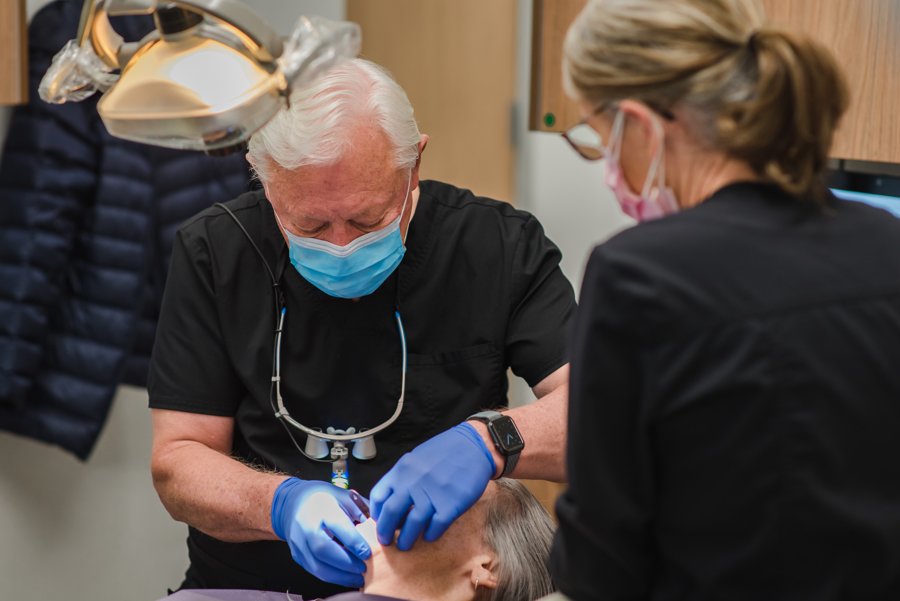The jaw joint is called the tempo-mandibular joint (TMJ) and is located just in front of the ear canal on each side of the head. The lower jaw (mandible) swings up to the joint and has a rounded head that sits into a depression in the temporal bone (zygoma). There is a cartilage disc or pad between the two bones and when you open and close your jaw, the head of the mandible rotates and slides against the disc. Heavy forces on the teeth such as grinding, clenching, trauma, bad bite or deep bite can put excessive pressure on the TMJ area. This can lead to pain and noise (clicking) in the TMJ. Also, it can cause ringing and pain in the ears which can feel like an ear infection. Physicians are now aware that ear pain may actually be a TMJ condition if they see no sign of infection in the ear. TMJ symptoms can become so severe that chewing, talking, and opening and closing the jaw becomes difficult and sometimes impossible. Surgical solutions have marginal results and are not the treatment of choice. Currently the best treatment is to stabilize the jaw with a plastic splint that controls the motion of the jaw and intercepts movements that would cause pain and clicking. Since this condition is progressive in its severity it is important to intercept the problem in its early stages. Mild irritation can be helped by:
- Moist heat over the TMJ area (hot wash cloth on the side of the face, just in front of the ear)
- Ibuprofen, 400-600 mg four times daily
- Soft diet
- Limit opening (no yawning or support the chin in a half-open position while yawning)
Frequent or progressively painful episodes need evaluation for possible splint therapy. A splint needs to be hard supportive acrylic and custom fit to the teeth for best results. The object is to prop the bite open beyond the painful position, decreasing stress on the joint and allowing the joint to heal. A custom fit is important because of the individual characteristics of a person’s anatomy, jaw movement, and tooth occlusion. There are several designs for splints that can address these individual characteristics to accommodate the best fit for you.
Splint therapy can also be used to intercept tooth grinding and clenching that occurs during stressful times or while sleeping. This can help intercept TMJ problems, sore and painful teeth, and wear on tooth surfaces. Many patients who grind and clench their teeth while sleeping report that they sleep better while wearing a splint.
Oral appliances similar to splints can also be used to hold a person’s jaw open and forward to help reduce snoring and to treat sleep apnea.
If you are experiencing TMJ issues, want to intercept grinding and clenching, or having problems with your jaw joints, text or call our office for a consultation.

